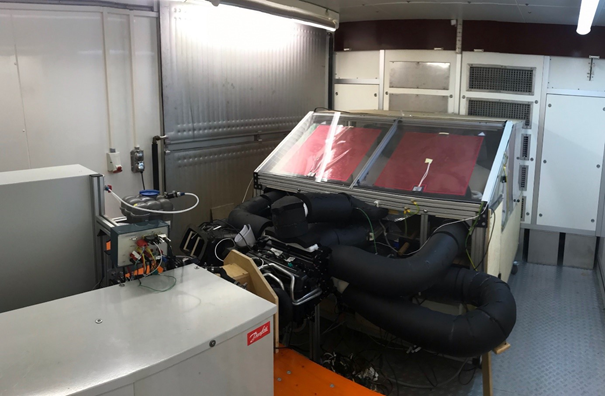Energy Efficiency and Climate Comfort
| Group leader: | Manuel Kipp |
| Keywords: | Thermal Comfort Assessment, Human Thermal Modeling, Objective Evaluation, Energy Efficiency and Climate |
The research group for Energy Efficiency and Climate Comfort deals with energy-efficient concepts for air conditioning. Currently, a lot of energy is used to climatize interior spaces. It is estimated that 26 billion liters of fuel are consumed in the USA annually, 6.9 billion liters in Europe, and 1.7 billion liters of fuel in Japan, just to cool the vehicle cabin [1]. Whereas sufficient waste heat could be used in the combustion engine, the powertrain of an electric vehicle no longer provides sufficient energy for heating the interior. Energy for air conditioning is taken from the battery, thus reducing the traveling range of the vehicle. The annual energy demand for air conditioning in residential and office buildings is also increasing in the building sector. At 2.021 TWh, the energy consumption increased 232% from 1990 to 2016 and is estimated to represent 10% of the global energy demand [2].
Innovations such as autonomous driving and air conditioning technologies require new ways of thinking and approaches for air conditioning to meet sustainability requirements and the interior design.
Thermal comfort is a key design parameter that determines the acceptance and satisfaction of new climate concepts. Comfort assessment thus provide the basis for energy considerations. When comparing established approaches, new air conditioning concepts for rooms and car cabins have to ensure thermal comfort while significantly reducing energy consumption for heating and cooling. In addition to the comfort aspect, thermal comfort is closely linked to the performance of humans. Unfavorable thermal conditions have a strong influence on concentration and reaction time [3]. For a holistic view of the development, analysis and evaluation of new concepts, the modeling of climatic comfort represents a large spectrum of research done by the energy efficiency and climate comfort section. The goal is ergonomic air conditioning and the reduction of energy demand for heating and cooling.
Objectives:
Energy and efficiency assessment of new air conditioning concepts in the vehicle and building sectors.
Focus:
- Increased efficiency and reduced CO2
- Increased range of elctrice vehicles
- Objective assessment of thermal comfort
Methods:
- Studies: Climate Chamber (-30°C bis +60°C), generic vehicle cabin für variable and automated test execution.
- CFD-Simulation

References
[1] J. Rugh, V. Hovland, and S. Andresen, “Significant Fuel Savings and Emission Reductions by Improving Vehicle Air Conditioning,” 2004.
[2] M. Janson, Kühle Luft.
[Online]. Available: de.statista.com/infografik/18722/energieverbrauch-von-klimaanlagen/ (accessed: Feb. 24 2021).
[3] J. Temming, “Fahrzeugklimatisierung und Fahrsicherheit: Auswirkungen sommerlichen Klimas in Kfz auf die Leistungsfähigkeit der Fahrer,” Forschungsvereinigung Automobiltechnik
, no. 177, pp. 1–319, 2003. [Online]. Available: www.vda.de/de/services/Publikationen/fat-schriftenreihe-177.html